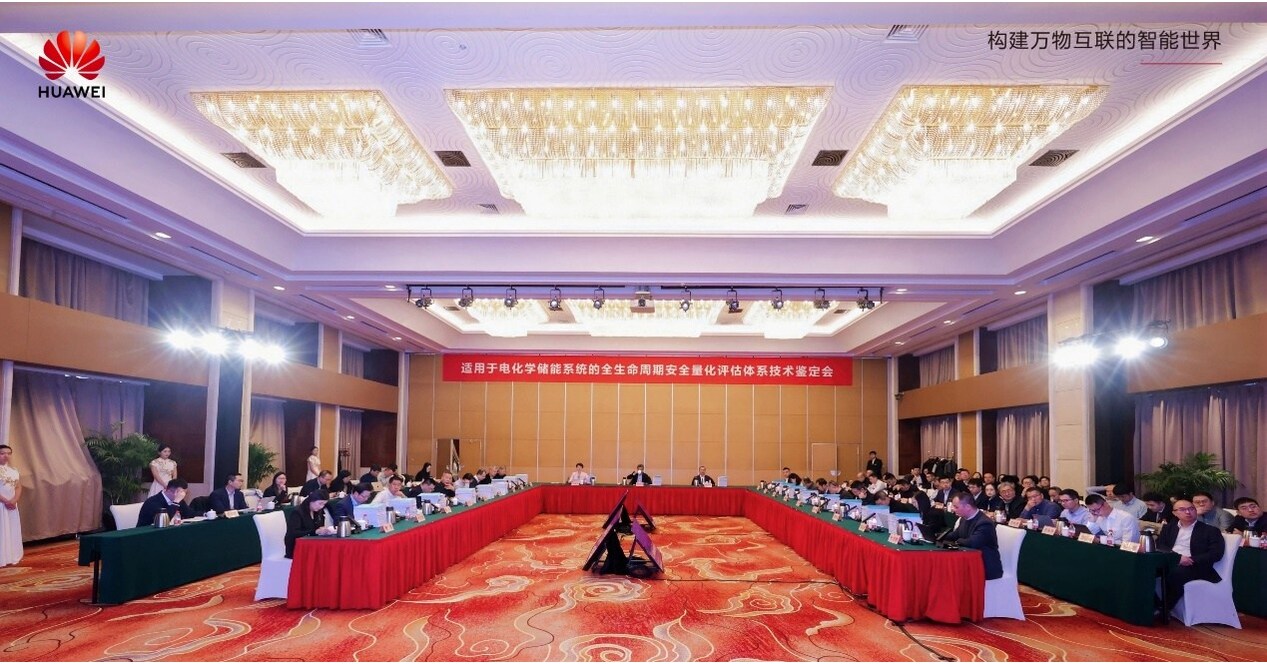BEIJING, Nov. 28, 2025 /PRNewswire/ — Huawei Digital Power, in collaboration with leading industry partners, has successfully passed a rigorous technical appraisal conducted by the China Electricity Council for the Full-Lifecycle BESS Safety Quantitative Assessment System. The appraisal committee unanimously affirmed that the system achieves a world-leading level, closing critical technical gaps in battery energy storage system (BESS) safety both in China and globally.
The appraisal committee members included Ouyang Minggao, professor of Tsinghua University; Rao Hong, chief scientist of China Southern Power Grid; and 12 experts from China Electric Power Research Institute, China Southern Power Grid Co., Ltd., State Grid Shanxi Electric Power Company, China Electric Power Planning and Engineering Institute, Zhejiang University, Specialized Committees of the China Energy Research Society, China International Engineering Consulting Corporation, Beijing Fire Rescue Brigade, TÜV Rheinland, and the People’s Insurance Company of China. The application was submitted by Huawei Digital Power and six organizations.
The committee accessed the project presentation, reviewed the appraisal materials, and conducted rigorous inquiries. They highly affirmed the innovation, technology, and practicality of the BESS safety quantitative assessment system, and unanimously agreed that: “This project innovatively builds a quantitative safety assessment system for the entire lifecycle of the BESS to address safety operation bottlenecks in large-scale BESS application. A universal safety risk evolution probability assessment model is established to quantify and scientifically grade system safety risks, filling the technical gap both in China and globally.”
The assessment system jointly proposed by Huawei Digital Power classifies the BESS safety risks from high to low into three levels: A (unacceptable), B (to be mitigated), and C (acceptable), and specifies the failure probability requirements corresponding to each level. Level A indicates extremely high risks that are completely uncontrollable, and the probability of major safety accidents is extremely high. Level B indicates high risks that must be reduced by continuously optimizing product design and introducing innovative technologies. Level C indicates that safety risks are controllable and serious consequences such as fire can be effectively avoided.
This project conducts systematic safety risk assessments on the BESS using a quantitative assessment framework, identifies key risk factors, and enhances product safety through core technologies. The four core safety technologies are as follows:
[1] Developed the high-precision intelligent active safety warning technology. Based on the dual-decoder multi-frequency hierarchical architecture, the technology improves the working condition coverage of the fault warning algorithm and ensures a recall rate of at least 95%.
[2] Pioneered the positive pressure oxygen blocking and directional smoke exhaust architecture, and developed a highly safe battery pack featuring heat resistance, high positive pressure, high air tightness, and corrosion and insulation protection. The battery pack does not catch fire or spread faults even if eight battery cells simultaneously experience thermal runaway.
[3] Pioneered the intelligent string energy storage dual-level conversion architecture, ensuring that grid current does not backfeed during grid transient overvoltage in the full SOC range, supporting constant power output to support stable grid recovery, and ensuring the safety of energy storage system equipment and the grid.
[4] Pioneered the high-temperature durable insulation and real-time detecting technologies, achieving high-resistance state of electrolyte leakage. Combined with full-range real-time insulation detection, the risk of arc ignition caused by insulation failure is suppressed.
The project achievements have been applied in large-scale projects in China and globally, such as the ZDI grid forming energy storage plant in Ngari Prefecture, China, the grid forming energy storage plant in Uzbekistan, and The Red Sea destination microgrid with 100% renewable energy in Saudi Arabia.
Professor Ouyang Minggao from Tsinghua University stated that the safety quantitative assessment system methodology developed in this project is the first of its kind in the industry, with outstanding technological innovations, and plays a significant supporting role in improving the overall safety level of the BESS industry. The project has significant economic and social benefits and application prospects, achieving the world-leading level. This will lead the continuous evolution of energy storage safety technologies, providing a solid guarantee for the construction of new power systems and high-quality development of the industry.
Steven Zhou, President of Smart PV & ESS Product Line, Huawei Digital Power, said that the next few years will be a critical period for PV, wind, and energy storage to become mainstream power sources. We hope that the industry players, industry authorities, industry associations, upstream and downstream enterprises, and standards organizations will work together to promote three key tasks: standards development, technology sharing, and ecosystem building. Huawei Digital Power is committed to working with industry partners to promote the large-scale, standardized, and high-quality development of the industry, accelerate the development of PV, wind, and energy storage as the main power sources, and close the global energy divide, delivering green, stable, and affordable power to all.
Photo – https://mma.prnewswire.com/media/2833740/image_5027572_53914741.jpg
Photo – https://mma.prnewswire.com/media/2833741/image_5027572_53914757.jpg
Photo – https://mma.prnewswire.com/media/2833742/image_5027572_53914773.jpg




